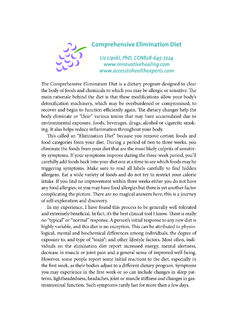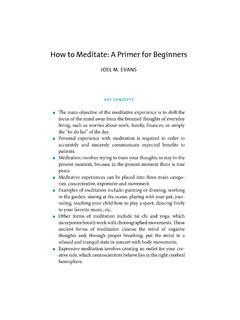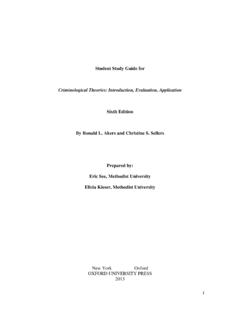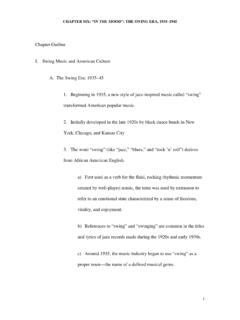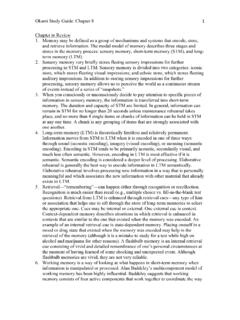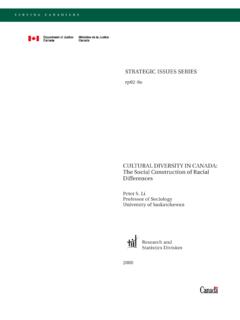Transcription of How to Meditate: A Primer for Beginners
1 How to meditate : A Primer for Beginners JOEL M. EVANS key concepts Th e main objective of the meditative experience is to shift the focus of the mind away from the frenzied thoughts of everyday living, such as worries about work, family, fi nances, or simply the to-do list of the day. Personal experience with meditation is required in order to accurately and sincerely communicate expected benefi ts to patients. Meditation involves trying to train your thoughts to stay in the present moment, because in the present moment there is true peace. Meditative experiences can be placed into three main catego- ries: concentrative, expressive and movement. Examples of meditation include: painting or drawing, working in the garden, staring at the ocean, playing with your pet, jour-naling, teaching your child how to play a sport, dancing freely to your favorite music, etc.
2 Other forms of meditation include tai chi and yoga, which incorporate breath work with choreographed movements. Th ese ancient forms of meditation cleanse the mind of negative thoughts and, through proper breathing, put the mind in a relaxed and tranquil state in concert with body movements. Expressive meditation involves creating an outlet for your cre- ative side, which neuroscientists believe lies in the right cerebral h e m i s p h e r e . Introduction Aft er reading and digesting the scholarly discussion on the myriad health benefi ts attributed to meditation, it is quite tempting for the busy physician to simply tell his patients that they need to meditate . However, when that recommendation no matter how sincere, well-meaning or intellectually appropriate is given by a physician that has not himself learned to meditate , the recommendation becomes hollow, compared to the same recommenda-tion from a regular meditator.
3 Personal experience with meditation is required in order to accurately and sincerely communicate the benefi ts you expect an individual patient, with his or her unique needs, to experience, and it is impossible to present that infor-mation with clarity unless you know how the practice of meditation has eff ected your own life and health. Once you can speak using the authority of personal experience as part of the basis for your meditation prescription, as well as actually guide your patients as you provide specifi c instructions on how to meditate , it will be extremely hard for your patients not to pick up on the conviction behind your recommendations, making them far more likely to be implemented. Aft er all, doesn t every physician want his patients to follow his advice so they can achieve better health? Learning to meditate and starting a regular meditation practice are vitally important ways to improve the lives of patients and physicians alike. Th e main objective of the meditative experience is to shift the focus of the mind away from the frenzied thoughts of everyday living, such as worries about work, family, fi nances or simply the to-do list of the day.
4 Th ere are countless ways, or techniques, to do this. What is Meditation? Meditation involves trying to train your thoughts to stay in the present moment, because in the present moment there is true peace. Th oughts of the future (what can/might/will happen, leading to fear or anxiety) or of the past (what did or might have happened, leading to sadness, depression, anger, or jealousy) prevent us from feeling the peace that is in the present moment. In other words, being totally focused in the present moment means that you do not think about the past or the future, and are freed (for as long as the medita-tion session lasts) from the negative emotions (stress) that accompany those thoughts. EXAMPLES OF MEDITATION Can you think of an activity in which you totally lose track of time? When your attention is so focused that you say, I don t know where the time went? Examples might be: painting or drawing, working in the garden, staring at the ocean, playing with your pet, journaling, teaching your child how to play a sport, dancing freely to your favor-ite music, etc.
5 I found that when I was in the operating room perform-ing surgery, I was so focused that my operations became true meditations. All of these situations are meditative experiences because there are no thoughts about the past or the future; the mind is thinking only of the present moment. S o a s y o u r e fl ect on the experience(s) in your life where you lost track of time, you will realize that you also lost track of whatever was in your life that was causing you stress, whether it was a toxic relation-ship, a chronic illness, or the sadness that comes with grief or loss. CATEGORIES OF MEDITATION If you are lucky enough to have a hobby or some sort of activity in which you engage on a daily basis and that makes you lose track of time, consider yourself one of the lucky people who have a regular meditation practice without know-ing it. However, the rest of us (the majority of people on the planet) need to create dedicated time in our schedule to engage in a formal activity to quiet the mind.
6 As you can tell from the examples listed above, these experiences can be placed into three main categories: C o n c e n t r a t i v e M o v e m e n t E x p r e s s i v e Th ese three forms of meditation have been used for centuries in diff erent cultures and religious traditions. I will give examples of techniques for each category, and I suggest you experiment with them all so that you have enough experience to know what you like best (so it can become the start of your regu-lar meditation practice), as well as to know how to best explain them to your patients. How to meditate First, scheduling time to meditate is of the utmost importance. We all lead busy lives and, despite the best of intentions, without a dedicated time for an activity, life oft en gets in the way and the activ-ity never happens. (Th ink of the diffi culty most people have fi nding the time to exercise unless they commit to a certain schedule.)
7 Th erefore, a meditation practice starts with fi nding the time on a daily basis. Th e good news here is that not a lot of time is required. A beginner can start with just a few minutes a day, eventually getting to 20 to 30 minutes a day as the benefi ts to the meditator become so obvious that it becomes the most important part of his or her day. CONCENTRATIVE TECHNIQUES I will discuss concentrative techniques fi rst, because they are ones that are most oft en described, taught and practiced. Th ey all involve active concentration, consciously focusing the mind on something specifi c. Examples of this type of meditation include staring at the dance of a candle fl ame, continuously repeating a word to yourself (such as peace , love or God ) or simply following your breath. Th e goal is to concentrate and try to ignore the other thoughts that will unfortunately pop into your head.
8 Th e secret is to allow those thoughts to come and to let them go by not allowing the mind to get caught up in them. Tips for Applying the Concentrative Techniques Don t keep thinking of an unpleasant incident, start getting worked up, begin feeling angry or hurt all over again and begin to plan your revenge. Th at is not a meditative experience, but serves as an illustration of how a thought that arises, which is of a negative inci-dent, is given additional power by thoughts of the emotions associated with it (how you feel) as well as the thoughts of how to achieve retribution. Instead of thinking that way, try your best to simply note that this is a thought that is occurring, and do your best to refocus your attention on the candle and not get stuck in the drama of the bad experience. Th is may be diffi cult to do at fi rst, but with practice it certainly can be done, although rarely to total perfection, except by yogis or monks.
9 If you need proof of the usefulness of these techniques, just ask an experienced meditator, who will likely be happy to share his or her success stories as well as the challenges that never fully go away. Positioning B e f o r e s t a r t i n g , i t i s i m p o r t a n t t o p o s i t i o n yourself properly, which means that you should be sitting comfortably, not lying down. Sitting in a chair is fi ne; just keep your feet on the fl oor. Sitting on the fl oor works just as well, with or without a cushion, but try to keep your back as close to straight as you can without pain or a lot of eff ort. You should not be distracted by tight clothing and your shoes should be off . A quiet place is best for concentrative work, as is a comfortable temperature. M a n y r e g u l a r m e d i t a t o r s l i k e to create a special place to meditate and feel they benefi t from sitting in front of things that have special meaning, such as pictures of loved ones, sacred objects, or crystals (amethyst is reported to enhance meditation).
10 While it is appropriate to try to achieve these ideal conditions, one of the wonders of meditation is that it can occur anywhere and every-where, even in the harshest of conditions, and that even true begin-ners have had eff ective meditations sitting on the ground outdoors in the noisy chaos of a United Nations refugee camp. Quieting the Mind Th e fi nal step in preparing for a quiet, concentrative meditation is to perform a technique that will help quiet the mind. A ft er getting comfortable (as described above), simply take your right hand and hold the center of your palm approximately 3 to 4 inches away from the spot on your forehead that is above your nose at the level of and in the middle of your eyebrows. Close your eyes and rotate your hand so that the center of your palm makes the outline of a circle that is the size of a quarter. Move your hand toward your left , such that if an observer were facing you, your hand would be moving in a clockwise direction.
